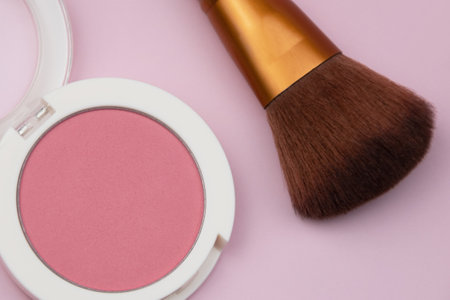1. Skipping Makeup Removal
After a long day, it’s tempting to just crawl into bed and forget about washing your face. But leaving your makeup on overnight is one of the most common night routine mistakes that can seriously ruin your skin. When makeup stays on while you sleep, it clogs your pores, traps oil and dirt, and prevents your skin from repairing itself. This can lead to breakouts, dullness, and even premature aging.
Why Proper Makeup Removal Matters
| Problem | What Happens |
|---|---|
| Clogged Pores | Foundation and concealer trap dirt and oil, causing blackheads and pimples. |
| Poor Skin Renewal | Your skin cant breathe or repair overnight, leading to tired-looking skin. |
| Irritation & Redness | Leftover eye makeup can cause irritation or even eye infections. |
How to Remove Makeup Effectively
- Use a gentle makeup remover: Try micellar water or cleansing balms for a thorough cleanse without stripping your skin.
- Double cleanse if needed: If you wear heavy or waterproof makeup, follow up with a mild facial cleanser.
- Don’t forget your hairline and jawline: These areas are often missed and can become breakout hotspots.
- Be gentle around the eyes: Use a soft cotton pad and avoid harsh rubbing to protect delicate skin.
Quick Tip:
Keep makeup remover wipes or micellar water by your bedside for those nights when you’re really exhausted. That way, you have no excuse not to take off your makeup before hitting the pillow!
2. Using Harsh Cleansers
If you’re using a strong, foamy cleanser every night, you might be doing more harm than good. Over-stripping your skin with harsh products can destroy your skin’s natural barrier, leaving it dry and irritated. This is especially true in many parts of the U.S., where the climate can already be tough on your skin—think dry winters in the Midwest or arid air out West.
Why Gentle Cleansing Matters
Your skin has a natural protective barrier made of oils and healthy bacteria. When you use cleansers packed with strong detergents or alcohol, you wash away more than just dirt—you remove these protective elements too. This can lead to:
- Dryness
- Flakiness
- Redness and irritation
- Breakouts (your skin might overcompensate by producing more oil)
Common Signs Your Cleanser Is Too Harsh
| Sign | What It Means for Your Skin |
|---|---|
| Tight feeling after washing | Your natural oils have been stripped away |
| Itching or stinging | Barrier damage and irritation |
| Increased redness or flaky patches | Sensitivity from over-cleansing |
| More breakouts | Your skin is compensating with extra oil production |
How to Choose a Better Cleanser
- Look for terms like “gentle,” “hydrating,” or “for sensitive skin” on the label.
- Avoid cleansers with sulfates (like sodium lauryl sulfate) or high alcohol content.
- Cream or gel formulas usually work well for most skin types.
- If you wear makeup, try double cleansing: use an oil-based cleanser first, then follow with a mild water-based one.
Switching to a gentler cleanser can make a big difference in how your skin feels and looks—especially if you live in areas where weather or indoor heating dries you out. Treat your nightly routine as self-care, not just another step before bed.

3. Neglecting Moisturizing
Moisturizing is one of those steps that’s easy to skip, especially after a long day. But forgetting to use moisturizer, especially if you live in drier parts of the U.S. like Arizona, Colorado, or Nevada, can seriously impact your skin’s health. Without proper moisture, your skin may feel tight, look dull, and even start showing signs of aging faster than you expect.
Why Moisturizing Matters
Your skin loses water overnight, which is why it often feels drier in the morning. Using a good moisturizer creates a protective barrier, locking in hydration and helping your skin repair itself while you sleep. This is important no matter your skin type—yes, even oily or acne-prone skin needs moisture!
Signs You’re Not Moisturizing Enough
| Sign | Description |
|---|---|
| Dry Patches | Flaky or rough areas that don’t go away easily |
| Tightness | Your skin feels uncomfortable or stretched after washing |
| Dullness | Lack of glow; your complexion looks tired or ashy |
| Fine Lines | Small wrinkles become more noticeable due to dehydration |
| Itchiness | Irritated or itchy spots, especially in colder months or dry climates |
Tips for Effective Moisturizing
- Choose the Right Product: If you have dry skin, opt for a rich cream. For oily or combo skin, try a lightweight gel or lotion.
- Apply on Damp Skin: Moisturizers work best when applied right after cleansing while your face is still slightly damp.
- Don’t Forget Your Neck: The neck is often ignored but shows aging quickly—treat it just like your face.
- Adjust for the Seasons: Use heavier creams in winter and lighter formulas in summer, especially if you live where weather changes drastically.
4. Overdoing Exfoliation
Exfoliating is a great way to remove dead skin cells and keep your skin looking fresh, but doing it too often can actually do more harm than good. In the U.S., there’s a big trend toward that ‘squeaky clean’ feeling—many people think their skin isn’t truly clean unless it feels tight or super smooth after exfoliating. But here’s the thing: over-exfoliating can strip away your skin’s natural oils, leading to inflammation, redness, and sensitivity.
Why Too Much Exfoliation Is a Problem
Your skin has a protective barrier made up of natural oils and healthy bacteria. When you exfoliate too much, you damage this barrier, making your skin vulnerable to irritation and even breakouts. It’s easy to get caught up in using scrubs, acids, or cleansing brushes every night—especially with so many trending skincare products on TikTok and Instagram. But your skin needs time to heal between exfoliating sessions.
How Often Should You Exfoliate?
| Skin Type | Recommended Frequency |
|---|---|
| Sensitive | Once a week |
| Normal/Combination | 1-2 times a week |
| Oily | Up to 3 times a week |
| Dry | Once a week or less |
Signs You’re Over-Exfoliating
- Redness or irritation that doesn’t go away overnight
- Tightness or burning sensation after washing your face
- More breakouts or flaky patches than usual
- Your skin feels sensitive even to gentle products
The bottom line? You don’t need to scrub your face every night for healthy skin. Listen to what your skin is telling you—sometimes less really is more when it comes to exfoliation.
5. Ignoring Pillowcase and Sleep Hygiene
When it comes to taking care of your skin at night, most people focus on skincare products and routines, but often forget about the basics—your pillowcase and sleep habits. Sleeping on a dirty pillowcase can actually undo all your hard work by transferring oil, sweat, dead skin cells, and bacteria right back onto your face while you sleep. This can easily lead to breakouts, irritation, or even dull, tired-looking skin.
Why Clean Pillowcases Matter
Throughout the week, pillowcases collect not just facial oils and leftover makeup, but also hair products, dust mites, and sweat. If you’re not washing your bedding regularly, you’re essentially exposing your skin to all these impurities for 6-8 hours every night! That’s why dermatologists recommend changing your pillowcase at least once or twice a week—especially if you have acne-prone or sensitive skin.
Pillowcase Hygiene Quick Guide
| Pillowcase Material | How Often to Wash | Extra Tips |
|---|---|---|
| Cotton | 1-2 times per week | Use fragrance-free detergent for sensitive skin |
| Silk/Satin | Once a week | Hand wash for longevity; helps reduce friction on hair and skin |
| Bamboo | 1-2 times per week | Hypoallergenic and gentle on skin; wash in cold water |
The Impact of Poor Sleep Habits on Your Skin
It’s not just about what’s touching your face—how well you sleep affects your complexion too. Poor-quality sleep can increase stress hormones in your body, leading to inflammation and breakouts. Not getting enough rest may also cause your skin to look dull or puffy the next morning.
Sleep Hygiene Tips for Healthier Skin
- Aim for 7-9 hours of quality sleep each night.
- Create a relaxing bedtime routine (like reading or meditation).
- Avoid heavy meals, caffeine, and screen time before bed.
- Keep your bedroom cool, dark, and quiet.
- Wash your face before bed to remove dirt and makeup.
Your Night Routine Checklist:
- Freshly washed face? Check!
- Clean pillowcase? Check!
- Consistent bedtime? Check!
- No late-night snacking or scrolling? Double check!
If you’ve been investing in serums and moisturizers but still notice breakouts or lackluster skin, take a closer look at your pillowcase and sleep habits—they might be the missing piece in your night routine puzzle.


